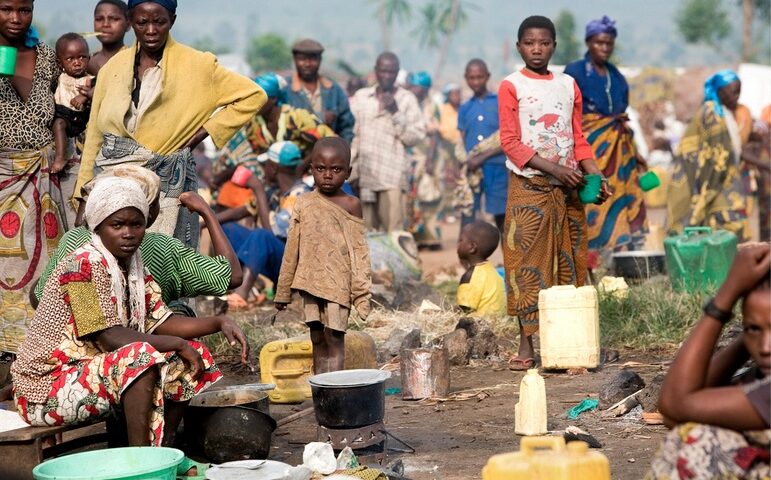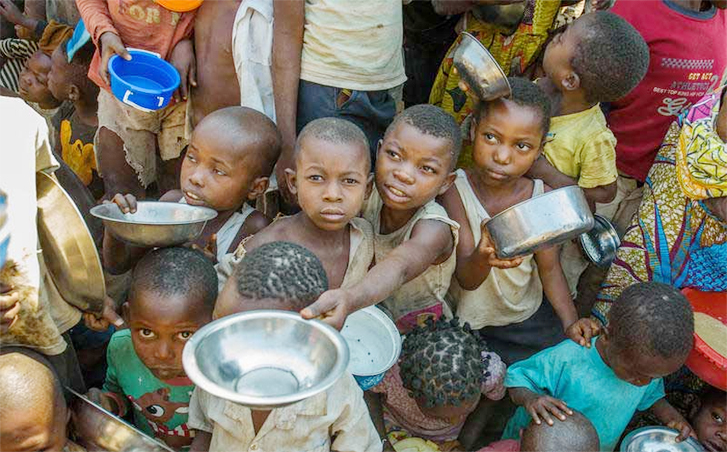A joint report by the Food and Agricultural Organisation (FAO) and the World Food Programme (WFP) has listed Nigeria, Ethiopia, South Sudan, and Yemen among the ’20 hunger hotspots’ in the world.
The report also included Mozambique, Syria, Myanmar, Central African Republic, DR Congo, Sudan, Madagascar, Afghanistan, Angola, Haiti, and Honduras. The report, which the organisation released January 27, 2022, warned that acute food insecurity was likely to deteriorate further in Nigeria and 19 other countries, particularly between February and May 2022. The report also predicted that Ethiopia, Nigeria, South Sudan, and Yemen remain at the highest alert level from the previous edition of the report.
“In their last available assessments, these countries all had parts of populations identified or projected to experience starvation and death (Catastrophe, Integrated Food Security Phase Classification [IPC] Phase 5), requiring the most urgent attention. In Nigeria, while some populations in conflict-affected areas in the northeast are now projected to slide into catastrophic food insecurity at the peak of the lean season, from June 2022 onwards, it cannot be excluded that some may start to experience this even earlier, in the next months, and that the magnitude may be higher than what projections anticipate,” the report stated.
The organisations issued an early warning for urgent humanitarian action in endangered countries where parts of the population are likely to face a significant deterioration of acute food insecurity in the coming months. Such development, according to the report, would put lives and livelihoods at risk. Of the identified hunger headquarters, the FAO-WFP report stated that Ethiopia, Nigeria, South Sudan, and Yemen remained at the highest alert level from the previous edition of its report.
According to the report, in their last available assessments, these countries all have parts of populations identified or projected to experience starvation and death (Catastrophe, Integrated Food Security Phase Classification [IPC] Phase 5), requiring the most urgent attention. The FAO-WFP therefore, called for an urgent and targeted humanitarian action to save lives and livelihoods, especially in Nigeria, Ethiopia, South Sudan and Yemen.
“Moreover, in four of these – Ethiopia, Nigeria South Sudan and Yemen – humanitarian actions are critical to preventing starvation and death,” the report stressed.
Giving specific reasons for the looming hunger in Nigeria, the report stated that in northern part of the country, attacks by non-state actors in the northeast, coupled with banditry and inter-communal violence in the North-central and northwest, would continue to disrupt agricultural and market activities. These, it added, would lead to reduced incomes and new displacement, including in areas that are projected to face Catastrophe (CH Phase 5).

“Precarious security conditions and high inflation rates are likely to further aggravate acute food-insecurity levels beyond Borno State in the outlook period. Countrywide, about 620,000 people – over 74 per cent of them in Borno, Adamawa and Yobe – are projected to face Emergency (CH Phase 4) from June to August 2022, up from about 230,000 in the 2021 post-harvest period, within a total of 18 million people expected to face Crisis or worse (CH Phase 3 or above) levels of acute food insecurity.
“This represents a sharp increase – by 6 million – from previous estimates. While this relates mostly to increased geographic coverage in the analysis, nonetheless it is also a reflection of an overall deterioration of food security in northwestern, north-central and south-eastern states, driven by high food prices and the upsurge of violence, which are expected to further constrain agricultural livelihoods and access to food.
“In the outlook, the likely deterioration of acute food insecurity levels is the result of persistent attacks by non-state armed groups in the northeast, coupled with banditry and inter-communal violence in the north central and northwest that continue to disrupt humanitarian access, and agricultural and market activities. On the economic front, higher year-on-year prices, underpinned by market disruptions and difficult macroeconomic conditions, continue to constrain food access for vulnerable households.
In the next months, prices will likely be further affected by the effects of conflict coupled with currency depreciation and foreign exchange shortages.
“In conflict-affected northern Nigeria, extreme access constraints are likely to continue in the outlook period due to persistent insecurity, while some areas most at risk of sliding into catastrophic situations remain out of reach,” the report added.
To identify hunger hotspots, FAO and WFP assessed how key drivers of food insecurity are likely to evolve and have combined effects across countries in the coming months, and the related risks of deteriorations. They identified these through interlinked or mutually reinforcing parameters, including organised violence and conflict, economic shocks such as secondary impacts of the COVID-19 pandemic, weather extremes and climate variability, animal and plant pests and diseases.





